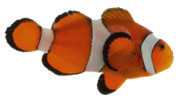FindingNemo in OneDay: Ultra-Long ONT Library Preparation from Cell to Flowcell in One Day
Inswasti Cahyani, John Tyson, Nadine Holmes, Josh Quick, Nicholas Loman, Matthew Loose
Abstract
Before start
Things to observe at all times:
- Excessive and vigorous pipetting and vortexing should be avoided as these may shear the DNA.
- Make up buffers with nuclease-free water to avoid introducing nucleases to solutions.
- Avoid unnecessary heating and freezing; isolated DNA should be stable for storage in the fridge for months.
Steps
Monarch UHMW DNA Extraction Kit
We have obtained optimal DNA extractions using the NEB Monarch kit. This combines speed with high quality UHMW DNA. Follow the manufacturer’s instructions as described here, BUT incorporate the following changes as described below.
To complete in one day, start early!
Dilute the eluted DNA with 150 μl of NEB Elution Buffer II.
Incubate the eluted DNA at 37oC for 2-3 hours with regular pipette mixing.
37°C 3h 0m 0s
Quantify the DNA as per " UHMW DNA QC " (steps 6-10 below) and check homogeneity by calculating %CV values. If the DNA is not sufficiently homogeneous ( i.e., %CV ≥ 100%) incubate the DNA for longer.
UHMW DNA QC
Two nucleic acid quantification methods, i.e., fluorometric (Qubit) and spectrophotometric (Nanodrop), can be used in parallel to assess both the quantity and purity of the extracted DNA. The quantification follows the published protocol by Koetsier and Cantor with slight modifications as follows.
An accurate measurement of DNA concentration is important as this will determine the optimum ratio of transposase to DNA molecules at the library prep step. Also, the viscous nature of UHMW DNA requires that sample measurement represents all parts of the DNA solution.
A total of 10 μl DNA is sampled from four different locations in the tube:
- top
- upper-middle
- lower-middle
- bottom
Each sample should be 2.5 μl and combined into a single 2 ml tube.
Add a glass bead and pulse vortex at full speed for one minute.
2400rpm
Quantify and calculate %CV as described in this paper by Koetsier and Cantor.
Next quantify any RNA carry-over using the Qubit RNA Broad Range kit (optional).
Wherever possible, the quality of extracted DNA sample should be analysed by method(s) that enable visual inspection of molecule length distribution such as:
- Regular agarose gel electrophoresis
- Pulsed-Field Gel Electrophoresis, e.g. , using Pippin Pulse (Sage Science)
- Agilent Bioanalyzer DNA
- Agilent TapeStation DNA
UL Library Prep
For library preparation, follow the " Modified ULK001 " library prep protocol (modified from Oxford Nanopore Technologies SQK-ULK001) as linked below:
NEMO Library Clean-up
This section provides an alcohol-free purification of a nanopore DNA sequencing library from an UL protocol.
For 5-40 μg of input UHMW DNA (corresponding to DNA extracted from 1-6 million human cells), add 3 clean glass beads into the sample in a 2 ml tube.
Add a 1:1 volume of 10 mM Hexamminecobalt(III) Chloride (CoHex) into the DNA solution.
Rotate the tube with a vertical rotator at 9 rpm for 5-10 minutes.
9rpm 0h 5m 0s
Invert the tube 3 times more by hand to ensure DNA has precipitated and is tightly bound to the beads.
Discard the supernatant. Take care not to disturb the DNA precipitated onto the beads.
Wash the glass beads by gently adding 1 ml of PEGW buffer and gently invert 3 times.
Incubate for 3 minutes at room temperature.
Room temperature 0h 3m 0s
Discard most of the supernatant, again taking care not to disturb the DNA precipitate.
Repeat step 17 with 500 μl of the PEGW buffer.
Discard the supernatant, taking care not to disturb the DNA precipitate. It isn't necessary to remove everything, a small volume of liquid can be left behind.
Insert a bead retainer into a collection tube.
Pour the beads from step 20 into the bead retainer and pulse-spin for 1 second in a mini centrifuge (or the shortest time possible) to remove any residual wash buffer. Keep the bead retainer.
Quickly pour the beads into a new 2 ml low-bind tube and immediately add the corresponding volume of elution buffer (ONT-EB or 10 mM Tris-HCl pH 8.0) per the table below.
| A | B | C |
|---|---|---|
| DNA Input Amount (μg) | No. of glass beads (3-mm diameter) | Elution Buffer Volume (μl) |
| >30-40 | 3 | 225 |
| >20-30 | 3 | 180 |
| >5-20 | 3 | 120 |
| >2-5 | 2 | 90 |
| 1-2 | 1 | 50 |
Incubate the library at 37oC for 30 min. Gently aspirate and dispense the eluate over the glass beads at regular intervals with a wide-bore P200 tip to aid elution.
37°C 0h 30m 0s
Insert the bead retainer from step 22 into a clean 1.5 ml tube. Pour the beads from step 24 into the bead retainer and centrifuge at 12,000 x g for one minute.
12000rpm
Incubate for at least 30 minutes at room temperature with regular pipette mixing.
Room temperature 0h 30m 0s
Flowcell Priming & Library Loading
Prime the flow cell as per the MinION or PromethION protocol.
Quantify 2-3 μl of the library sample using fluorometric method (Qubit DNA BR kit) or alternatively the spectophotometric method (Nanodrop).
Mix 38-40 μl library (or at least 1 μg) with the same volume of sequencing buffer (SQB) from the SQK-ULK001 kit or SQK-RAD004, mix and incubate at room temperature for 30 minutes.
Room temperature 0h 30m 0s
Load the library per SQK-ULK001 protocol and let it tether for another 30 minutes before starting the run.
0h 30m 0s
Select the correct UL sequencing script based on the sequencing kit used (default mux scan should already be set to every 6 hours).
Home-brew Flowcell Wash/Flush (Optional)
This section can be used to reload library on the same flowcell.
Add 2 μl DNase I to 398 μl nuclease flush buffer (NFB), vortex to mix.
After opening the priming port of the flow cell, check for a small bubble under the cover. Draw back a small volume to remove any bubble:
Set a P1000 pipette to 200 μl
Insert the tip into the priming port
Turn the wheel until the dial shows 220-230 μl, or until a small volume of buffer is seen entering the pipette tip
Using a P1000 pipette, load 400 μl of the NFB plus DNase I into the flow cell priming port.
Close the flow cell priming port and incubate the flow cell in situ for at least 1 hour.
1h 0m 0s
Reprime the flow cell as in step 28.
Reload the library as in step 30-32..




